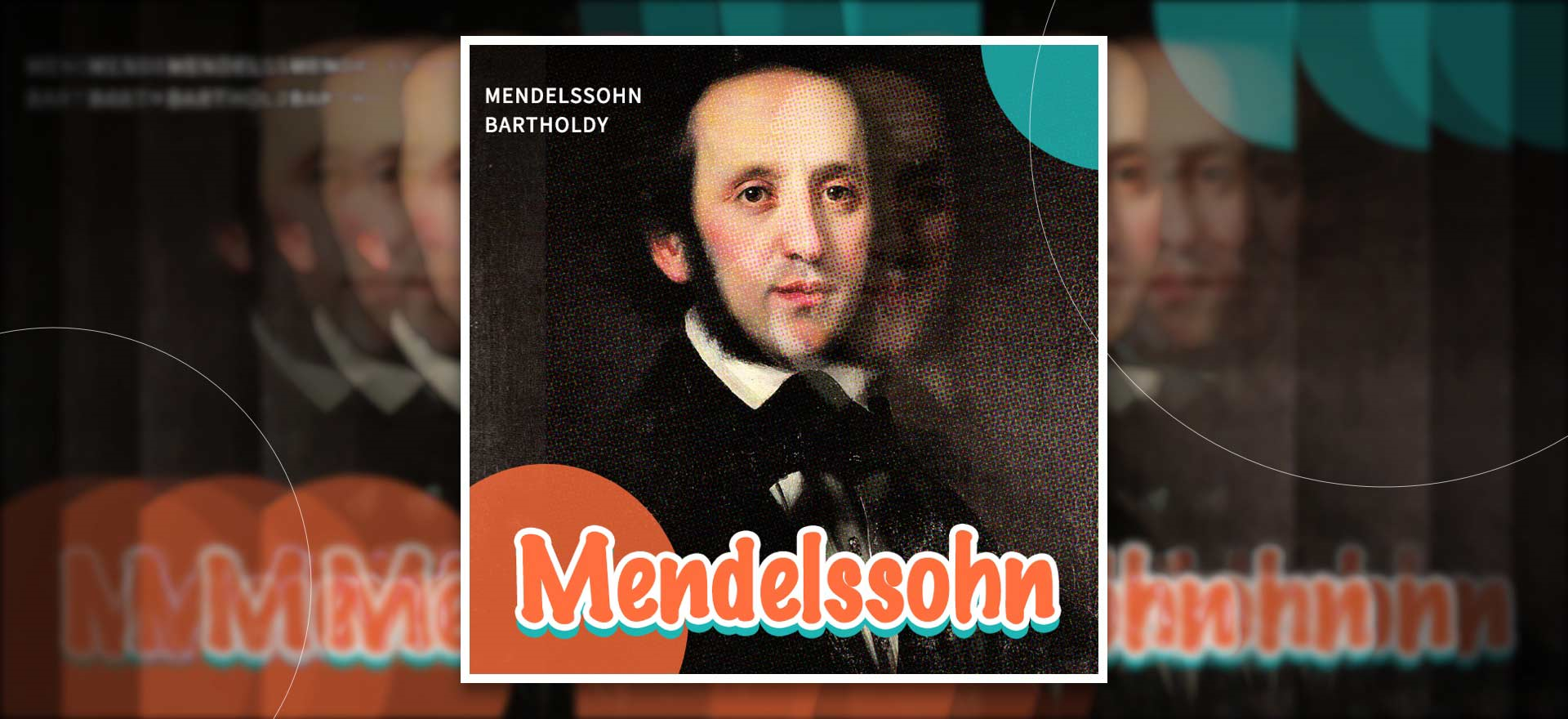Hello, Violy violinists. Going through the recently added “Albums” of violin repertoires on Violy — the best violin app, is a process filled with ‘violy’ feelings. In today’s article, we will discuss the repertoire from Felix Mendelssohn, who is now among the most popular composers of the Romantic era.

Album (Violin) Composer: Felix Mendelssohn
Felix Mendelssohn was a German composer, pianist, organist and conductor of the early Romantic period. He was recognized early as a musical prodigy, but his parents were cautious and did not seek to capitalize on his talent.
Mendelssohn enjoyed early success in Germany, and revived interest in the music of Johann Sebastian Bach, notably with his performance of the St Matthew Passion in 1829. He became well received in his travels throughout Europe as a composer, conductor and soloist; his ten visits to Britain — during which many of his major works were premiered — form an important part of his adult career.
His essentially conservative musical tastes set him apart from more adventurous musical contemporaries such as Franz Liszt, Richard Wagner, Charles-Valentin Alkan and Hector Berlioz. After a long period of relative denigration due to changing musical tastes and antisemitism in the late 19th and early 20th centuries, his creative originality has been re-evaluated. Schumann wrote of Mendelssohn that he was “the Mozart of the nineteenth century, the most brilliant musician, the one who most clearly sees through the contradictions of the age and for the first time reconciles them.”
Mendelssohn’s Violin Composition
Mendelssohn’s compositions include symphonies, concertos, piano music and chamber music. His best-known works include his overture and incidental music for A Midsummer Night’s Dream, the Italian Symphony, the Scottish Symphony, the oratorio Elijah, the overture The Hebrides, his mature Violin Concerto, and his String Octet. He also composed the two early string quartets: Op. 12 (1829) and Op. 13 (1827), which both show a remarkable grasp of the techniques and ideas of Beethoven’s last quartets that Mendelssohn had been closely studying.
The Violin Concerto in E minor, Op. 64 is his most well-known violin work. Joseph Joachim called it one of the four great violin concertos along with those of Beethoven, Brahms, and Bruch. Mendelssohn also wrote a lesser-known, early concerto for violin and strings in D minor (1822) and another double concerto, for violin and piano (1823). In addition, there are several single-movement works for soloist and orchestra.
Mendelssohn’s mature output contains numerous chamber works, many of which display an emotional intensity lacking in some of his larger works. In particular, his String Quartet №6, the last of his string quartets and his last major work, is exceptionally powerful and eloquent. Other mature works include two string quintets and sonatas for the clarinet, cello, viola and violin.

Violy Album Contents:
There are totally 6 pieces of music in the self-titled Album of Felix Mendelssohn on Violy, including:
- Autumn Song Op. 63, №4 | Ma non troppo = 120
- Concerto in E minor, Op. 64, I | Allegro appassionato = 96
Felix Mendelssohn’s Violin Concerto in E minor, Op. 64, is his last large orchestral work. It forms an important part of the violin repertoire and is one of the most popular and most frequently performed violin concertos in history. The concerto consists of three movements with the following tempo markings: Allegro molto appassionato (E minor), Andante (C major), and Allegretto non troppo — Allegro molto vivace (E major).
Although the concerto consists of three movements in a standard fast–slow–fast structure and each movement follows a traditional form, the concerto was innovative and included many novel features for its time. Distinctive aspects include the almost immediate entrance of the violin at the beginning of the work (rather than following an orchestral preview of the first movement’s major themes, as was typical in Classical-era concertos) and the through-composed form of the concerto as a whole, in which the three movements are melodically and harmonically connected and played attacca (each movement immediately following the previous one without any pauses).
The concerto was well received and soon became regarded as one of the greatest violin concertos of all time. It remains popular to this day and has developed a reputation as an essential concerto for all aspiring concert violinists to master, and usually one of the first Romantic era concertos they learn. Many professional violinists have recorded the concerto and the work is regularly performed in concerts and classical music competitions.
- On Wings of Song | Andante tranquillo = 120
- Spring Song — Op. 62, №6 | Allegretto grazioso = 98
- Symphony №4 — “Italian” | Allegro vivace = 152
The Symphony №4 in A major, Op. 90, commonly known as the Italian, is an orchestral symphony written by Mendelssohn. The symphony is scored for 2 flutes, 2 oboes, 2 clarinets, 2 bassoons, 2 horns, 2 trumpets, timpani and strings. It is in four movements: Allegro vivace (A major), Andante con moto (D minor), Con moto moderato (A major), and Presto and Finale: Saltarello (A minor).
The joyful first movement, in sonata form, is followed by an impression in the subdominant minor of D minor of a religious procession the composer witnessed in Naples. The third movement is a minuet in which French horns are introduced in the trio, while the final movement, which is in the minor key throughout, incorporates dance figurations from the Roman saltarello and the Neapolitan tarantella. It is among the first large multi-movement works to begin in a major key and end in the tonic minor, another example being Brahms’s first piano trio.
- Wedding March | Allegro mod. = 120
In this series of article, we will introduce you the music pieces of
Felix Mendelssohn,
Pyotr Ilyich Tchaikovsky,
and finally, Dmitri Shostakovich.
Stay tuned, Violy musicians, let’s bring the music fashion of violin back~
Ref:
1: https://en.wikipedia.org/wiki/Felix_Mendelssohn
2: https://en.wikipedia.org/wiki/Violin_Concerto_(Mendelssohn)
3: https://en.wikipedia.org/wiki/Symphony_No._4_(Mendelssohn)
Have a HAPPY practice!!
More Violin Articles:
Teaching Violin Students to Read Key Signatures
Solfeges used in Violin Lessons
#ViolyPractice makes Perfect!!
Follow us on: Violy.app
